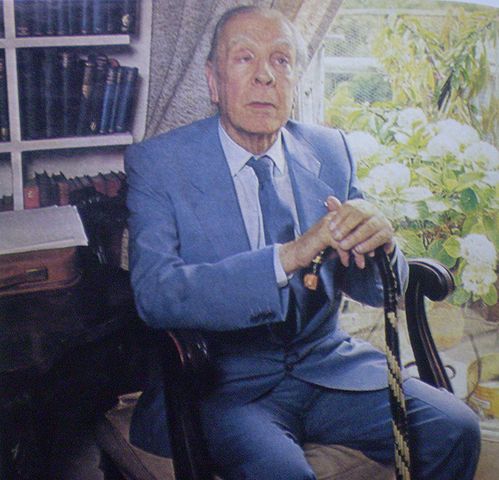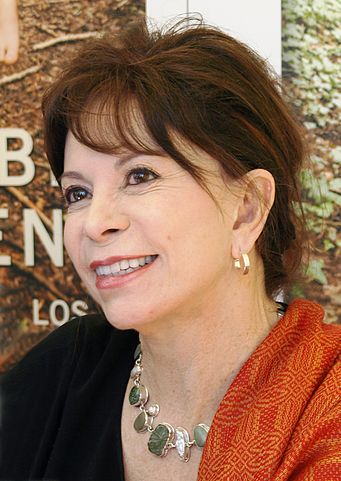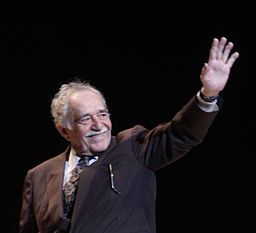What is Magical Realism in Literature?

Today we’re exploring magical realism, one of the most interesting literary movements in recent history.
A brief history of magical realism
The 20th century was a century of “-isms” in the West. Never before had there been so many dynamic philosophical, aesthetic, political, sociological, and psychological schools of thought: from Freudianism to Keynesianism to Cubism.
One of the famous literary “-isms” to arise in this time, especially in Latin America, was called magical realism.
In contrast to pure fantasy, magical realism in literature sought to re-invigorate the ordinary with the sublime. Magical realism novels do not contain the elves and wizards of a Tolkien tale—instead they explore the strangeness, horror, and awe of the real world.
So where did magical realism start?
From German tableaux to Buenos Aires cafés
Many people who know a bit about Latin American literature assume that the term “magical realism” must have come from somewhere in South America. In reality, this is not the case.
It was actually the German art critic Franz Roh who first put these terms in print in 1925. Interestingly, Roh was not describing literature at all but rather a new phenomenon in German painting. Artists at the time like Otto Dix, Max Beckmann, and George Grosz represented for Roh a total departure both from Impressionism, which was still faithful to images in the outside world, and Expressionism, which actively rebelled against nature.
Roh saw these new Post-Expressionists as exemplars of what he dubbed (in German, of course), “Magischer Realismus.” He used this term to try to express the new generation’s interest in painting images drawn from nature yet also imbued with a sense of the otherworldly.
Interestingly, Roh’s term fell out of favor in painting circles pretty quickly. But the term did catch the eye of many Latin American intellectuals after Roh’s book, Nach-Expressionismus (Magischer Realismus), was translated into Spanish in 1927. The term instantly became fashionable in Buenos Aires literary clubs.
Just as Roh saw painting forming kind of Hegelian synthesis between Impressionism and Expressionism, so too did Latin American artists believe they could form a synthesis out of literary realism and escapist fantasy literature.
Literary precursors in Europe and Latin America
The development of magical realism didn’t happen overnight. It took many years before Latin American authors saw themselves as “magical realists.”
Actually, one could argue that the very first literary forays in this genre came from Europeans like Massimo Bontempelli, Franz Kafka, and G. K. Chesterton. Many Latin American authors drew inspiration from these European giants in formulating their own unique style of literature.
It was not until Argentina’s Jorge Luis Borges (1899-1986) that this new Latin American literature gained global fame.

Jorge Luis Borges, via Wikimedia Commons
The famous critic Ángel Flores classifies Borges as the first “official” magical realist, pinpointing the start of the genre with his monumental publication of Historia Universal de la Infamia (A Universal History of Infamy) in 1935. This collection of short stories tells of criminals and vagabonds from a wide variety of times and places, and it represents one of Borges’ early forays into the literary world of Argentina.
Although this 1935 text was one of Borges’ first mature works, he really made his mark on the literary world with the publication of Ficciones in 1944. These 17 short stories are full of magic, mischief, and wonder that continue to enchant readers around the world.
Other treasured works by Borges include the short story collection El Aleph and Other Stories, as well as various collections of literary criticism and poetry.

Tomb of Jorge Luis Borges by Jorge Antonio Leoni de León, via Wikimedia Commons
While a few critics join Flores in dubbing Borges the first magical realist, some simply see Borges as the most fundamental precursor and inspiration for the magical realist movement.
Magical realist or not, Borges’ importance to world literature is beyond doubt. With his innovative style and unique stories, Borges legitimized Latin American literature on a global scale. He opened the doors and, more importantly, the imaginations of whole new generation of Latin American authors.
The Post-Borges boom: Allende, Asturias, Marquez
Three of the biggest magical realism authors from Latin America include Isabel Allende, Miguel Angel Asturias, and Gabriel Garcia Marquez.
Isabel Allende is a highly regarded Chilean-American writer whose work deals with the many issues that women face in the Latin American community.

Isabel Allende by Mutari, via Wikimedia Commons
Her first major work was La Casa de los Espíritus (The House of the Spirits), a novel that tells the story of four generations of a Chilean family. Love, magic, jealousy, revolution, and tenderness are present throughout this work, and Allende’s indebtedness to both Marquez and Borges is quite apparent in her style and structure. Still, this work stands on its own as a masterpiece of magical realism, a testimony to the long history of Chile, and a central work of Latin American literature.
Miguel Angel Asturias was also very concerned with politics in his fiction. Asturias wrote much of his fiction in exile due to Jore Ubico Castañeda’s dictatorship in Guatemala, which lasted from 1931-1944. Asturias’ most famous work is El Señor Presidente (The President), in which he effectively molds together myth, stream-of-consciousness, surrealism, and political protest. This novel has been championed around the world as a major achievement in the literature of dictatorship.
Gabriel Garcia Marquez by Festival Internacional de Cine en Guadalajara (Gala_Ianugural 022) [CC BY 2.0 (http://creativecommons.org/licenses/by/2.0)], via Wikimedia Commons
Gabriel Garcia Marquez is undoubtedly the most famous magical realist, excluding—or perhaps even including—Jorge Luis Borges. We’ll be dedicating an entire post to Marquez and his seminal work One Hundred Years of Solitude in the coming weeks, so we won’t talk too much about Marquez here.
Magical realism’s literary impact
Latin American literature from the magical realist era contains both the etherial light of a mystic’s mind and the grittiness of political strife. They help us see monsters in men and magic in automobiles.
Despite its fantastic plots, wild settings, and beyond-human characters, magical realism as a genre was never meant to be escapist. These authors were instead on a quest for that special place between dreams and reality—a place we mortals inhabit every moment and yet remains so difficult to communicate.
Magical realism continues to have a huge impact on writers today, including Salman Rushdie, the acclaimed author of Midnight’s Children and The Satanic Verses.
As he says:
By including elements of the fantastic or elements of fable or mythological elements or fairy tale or just pure make-believe, you can actually start getting at the truth in a different way.
Watch Salman Rushdie’s complete interview here:
Through their oftentimes mind-bending works, magical realist authors found a way to communicate the unique and contradictory experience of life, both of its remote possibilities and its harsh realities. Their works have the power to give us a jolt of the otherworldly grandeur of existence.
Who’s your favorite magical realist author?






Leave a Reply
2 Comments on "What is Magical Realism in Literature?"
This was very entertaining. I love looking at the similarities between grimdark and magical realism.
Magical realism is one of my favorite genres. I’m less familiar with Grimdark, but after reading the Wikipedia article it looks like something I’d be interested in learning more about.